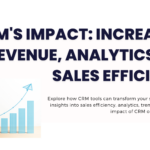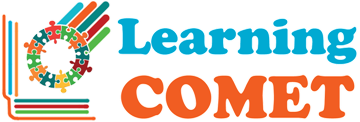
Embracing Modern CRM with ClickUp: A Deep Dive into Efficiency and Innovation
June 6, 2024WHITEPAPER: Goals and Objectives in Individualized Education Programs (IEPs)
April 10, 2025Whitepaper: Advancing Adolescent Literacy in 2025: Challenges, Opportunities, and Solutions
Introduction
Adolescent literacy remains a critical concern in education as of April 2025. Despite decades of efforts to improve reading proficiency, national assessments indicate that a significant portion of students in grades 4–12 struggle with the skills needed to comprehend complex texts, hindering their academic success and future opportunities. The National Assessment of Educational Progress (NAEP) continues to report that only about one-third of U.S. adolescents read at or above proficiency levels, a statistic that has shown little improvement over time. This persistent gap underscores an urgent need to re-evaluate and enhance literacy programs for older students.
This whitepaper explores the state of adolescent literacy programs, identifies key challenges, and proposes evidence-based solutions to address the diverse needs of struggling readers. Drawing on the latest research, including insights from the science of reading, and real-world examples from my educational therapy practice, I aim to guide parents, educators, administrators, and policymakers in fostering meaningful literacy gains.
The Current Landscape of Adolescent Literacy
Adolescence marks a pivotal shift from “learning to read” to “reading to learn.” Yet, many students enter middle and high school without the foundational skills—decoding, fluency, vocabulary, and comprehension—required to engage with grade-level material. Several factors contribute to this ongoing crisis:
- Insufficient Early Intervention: While early literacy programs have improved, students who miss critical benchmarks in elementary school often receive inadequate support as they progress, allowing gaps to widen.
- Diverse Learner Needs: Adolescents exhibit a range of reading difficulties, from decoding issues to comprehension deficits, compounded by factors like English language learner (ELL) status or socioeconomic challenges.
- Limited Teacher Preparation: Many secondary educators lack training in literacy instruction, as it is often assumed to be the domain of elementary education or English Language Arts (ELA) specialists.
- Engagement Barriers: Older students may disengage from reading due to frustration, lack of relevance, or competing priorities, making traditional interventions less effective.
Despite these challenges, advancements in educational technology and professional development offer hope. Programs grounded in the science of reading—emphasizing phonics, fluency, vocabulary, and comprehension—are gaining traction, supported by adaptive tools and data-driven instruction.
Key Challenges in Adolescent Literacy Programs
- Identification of Struggling Readers: Schools often rely on end-of-year assessments that highlight who is struggling but fail to pinpoint why. This delays targeted interventions.
- Resource Constraints: Budget cuts and staffing shortages limit access to specialized literacy support, particularly in underserved districts.
- One-Size-Fits-All Approaches: Many programs fail to address the heterogeneity of adolescent readers, applying uniform strategies that overlook individual needs.
- Systemic Misalignment: Literacy instruction is frequently siloed in ELA classrooms, rather than integrated across subjects, reducing its impact on overall academic performance.
Emerging Opportunities
Recent developments provide a foundation for progress:
- Science of Reading Adoption: States like Florida and Virginia have mandated evidence-based literacy practices, driving demand for programs aligned with phonological awareness, decoding, and comprehension strategies.
- Technology Integration: Adaptive platforms, such as those leveraging AI to personalize learning paths, enable real-time progress monitoring and tailored instruction.
- Professional Learning: Initiatives that equip educators with the knowledge to address literacy across grade levels and subjects.
- Policy Support: Federal and state funding, such as post-ESSER investments, continues to prioritize literacy, offering resources for innovative programs.
Proposed Solutions
To advance adolescent literacy in 2025, stakeholders must adopt a multifaceted approach:
- Early and Ongoing Assessment
Implement diagnostic tools that identify specific literacy deficits—whether in decoding, fluency, or comprehension—early in middle school. Use real-time data to adjust instruction dynamically, ensuring interventions are timely and precise. - Personalized Interventions
Leverage adaptive technology to create individualized learning pathways. For example, a student struggling with decoding could receive targeted phonics practice, while another with comprehension issues engages with vocabulary-building exercises. Programs focused on the Orton-Gillingham approach, blending online and teacher-led instruction. - Cross-Curricular Literacy Instruction
Embed reading and writing skills in all subjects, not just ELA. Science and history teachers, for instance, can use structured literacy strategies to help students decode technical terms and synthesize complex texts. Professional development must support this shift, equipping all educators with foundational literacy knowledge. - Engagement Through Relevance
Connect literacy to students’ interests and real-world contexts. Programs like the REACH initiative at California State University, Fullerton, use sports to spark reading engagement, while arts-based approaches, such as Brown University’s ArtsLiteracy Project, link literacy to creative expression. - Teacher Empowerment
Expand access to professional learning rooted in the science of reading. Flexible, self-paced modules—combined with coaching—can help teachers integrate evidence-based practices without overwhelming their schedules. This builds a sustainable culture of literacy expertise. - Equity-Focused Investments
Prioritize funding for high-need schools, ensuring access to technology, trained staff, and culturally responsive materials. Address the needs of ELLs and students with disabilities through specialized support, such as oral language development and assistive tools.
Case Studies and Evidence
- Florida’s Literacy Gains: In the 2023–2024 school year, Florida districts using Lexia PowerUp saw 86% of students reach benchmark and pass the state’s FAST assessment, demonstrating the efficacy of structured literacy interventions.
- Virginia’s ALL In Initiative: By integrating literacy across subjects with tools like Lexia Aspire, Virginia schools have reduced reliance on costly tutoring, empowering teachers to address gaps directly in the classroom.
- Urban Success Story: A Chicago middle school using adaptive literacy platforms reported a 20% increase in reading proficiency within one year, attributed to data-driven instruction and student engagement strategies.
Conclusion
The state of adolescent literacy programs in 2025 reflects both persistent challenges and unprecedented opportunities. By embracing evidence-based practices, leveraging technology, and prioritizing teacher training, educators can close the literacy gap and prepare students for a future where reading proficiency unlocks academic and economic success. The adage “the more you learn, the more you earn” holds true—proficient readers are poised for greater opportunities. Now is the time to act decisively, ensuring that every adolescent receives the support needed to thrive.
